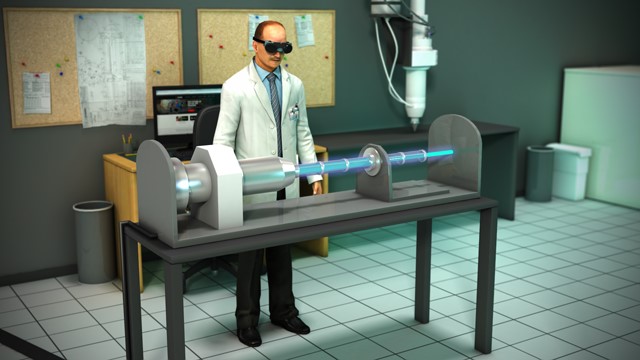




Laser Safety
Lasers have become an integral part of society. They are used in everything from fiber optic communication systems to surgical procedures to barcode scanners and laser levels. The practical applications of lasers are almost unlimited.
This course describes laser light, how lasers work, and different types of lasers. It explains the different laser classifications, describes engineering and administrative controls used on and around lasers and lists laser hazards and safety guidelines.
Request a demoCourse Details
Learning Objectives
At the end of this course, you will be able to:
- Describe laser light
- Describe how lasers work
- Identify the different types of lasers
- Differentiate between the different laser classifications
- List different engineering and administrative controls
- Differentiate between specular reflection and diffuse reflection
- List laser hazards and safety guidelines
Specs
| Course Level | Intermediate |
| Languages | English, Portuguese, Chinese, French, German, Italian, Japanese, Tamil, Spanish, Thai |
| Compatibility | Audio, Video |
| Based on: | STD 01-05-001 - PUB 8-1.7: Guidelines for Laser Safety and Hazard Assessment |
Key Questions
What does LASER stand for?
Light amplification by stimulated emission of radiation.
What is a laser?
A light source that emits a light beam of a single wavelength and color. Such a light beam is very intense and highly directional.
What are the different types of lasers?
Some common types include solid state, gas, excimer, dye, and semiconductor (or diode) lasers.
How are lasers classified?
Based on their potential to cause biological damage.
What are the laser classifications?
From least dangerous to most dangerous, they are Class I lasers, which are not considered hazardous and do not emit damaging radiation; Class II lasers, which are not considered hazardous for exposure of less than ¼ second; Class IIIa lasers, which are more powerful than Class II lasers and therefore more dangerous; Class IIIb lasers, which are even more dangerous and should be used only by trained and authorized personnel; and Class IV lasers, which present the highest level of hazard.
What is the greatest hazard involved with laser use?
Damage to the eye.
What is a nominal hazard zone (NHZ)?
A place where Class IIIB and Class IV lasers are used.
Is it safe to direct a laser beam directly at someone?
You should not do this. In particular, don’t direct the laser toward an eyeball, which can be especially dangerous.
Sample Video Transcript
There are two types of reflection hazards that are associated with high powered lasers. These are specular reflections and diffuse reflections. Specular reflections are caused by a laser beam contacting a smooth reflective surface and then bouncing in another singular direction. A specular reflection can almost be as hazardous as the incident beam. Care must be taken to not leave any reflective metals or surfaces inside the nominal hazard zone where they could be reflected. Diffuse reflections are caused by a laser beam contacting a rough reflective surface and bouncing in multiple directions. Diffuse reflections are lower energy than the incident beam. Diffuse reflections from Class IV lasers may cause eye and skin hazards.
Additional Resources
- U.S. Department of Labor’s Occupational Safety & Health Administration (OSHA) – www.osha.gov
- OSHA Safety and Health Topics https://www.osha.gov/SLTC/laserhazards/index.html
- OSHA Alliance – https://www.osha.gov/dcsp/alliances/lia/lia.html
Course Applies To
Demos + Pricing
Learn more about our courses, get pricing, and see our platform.











